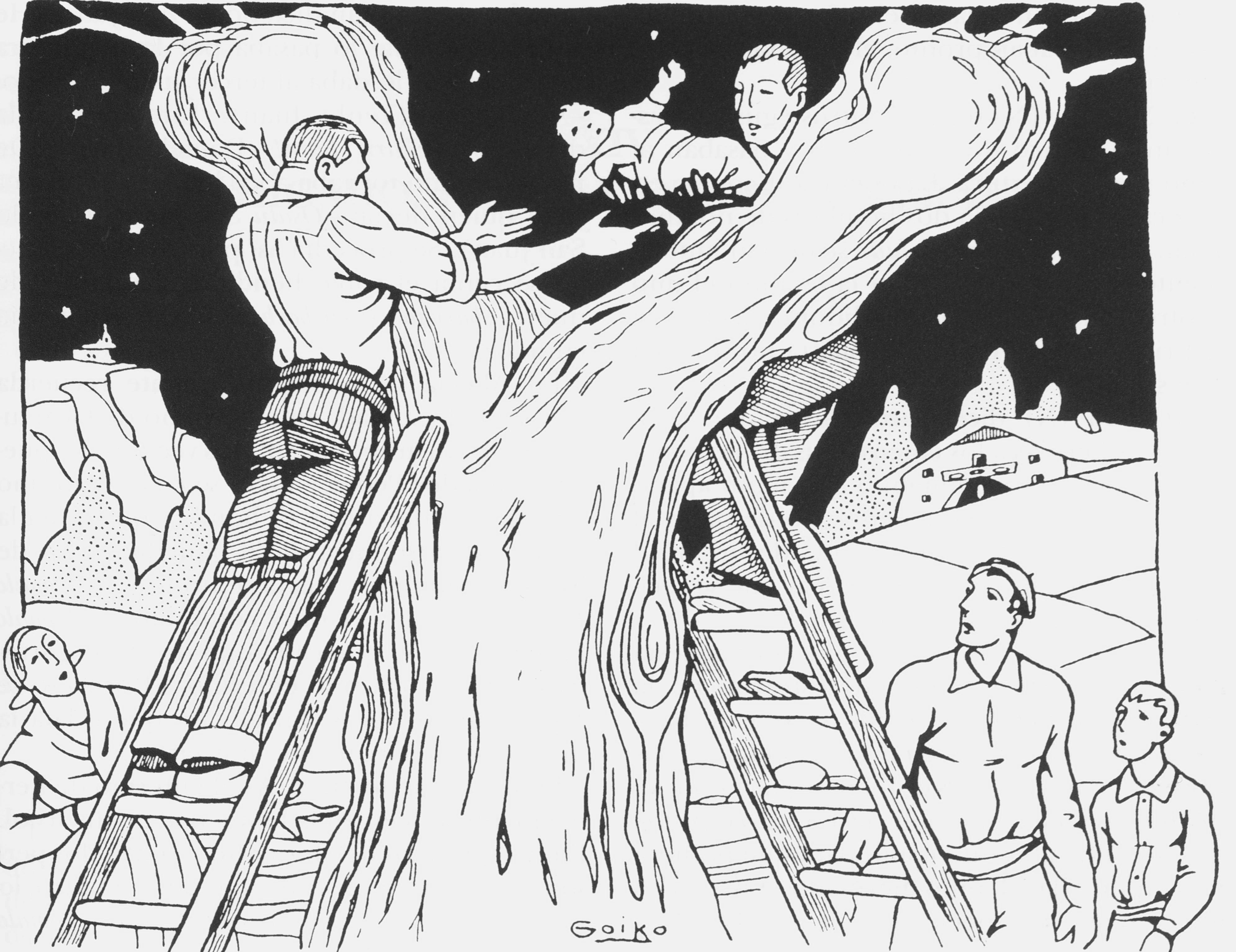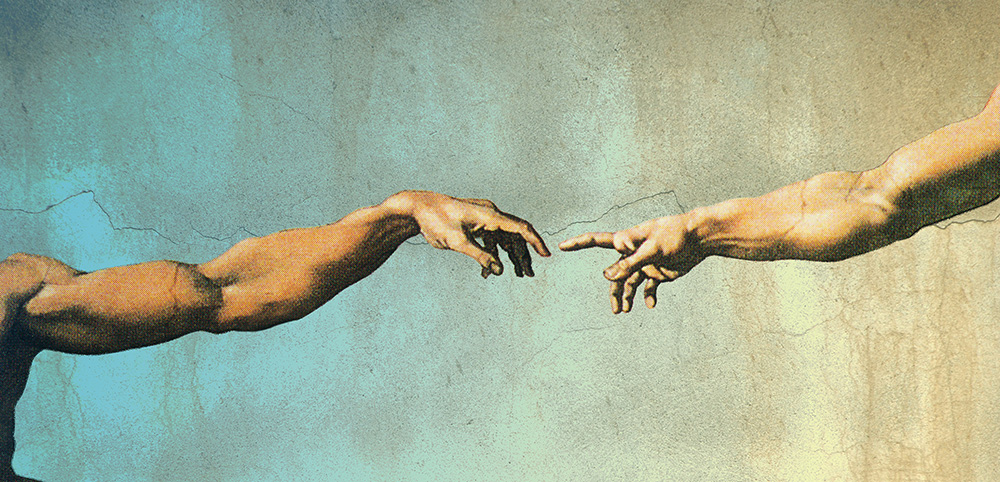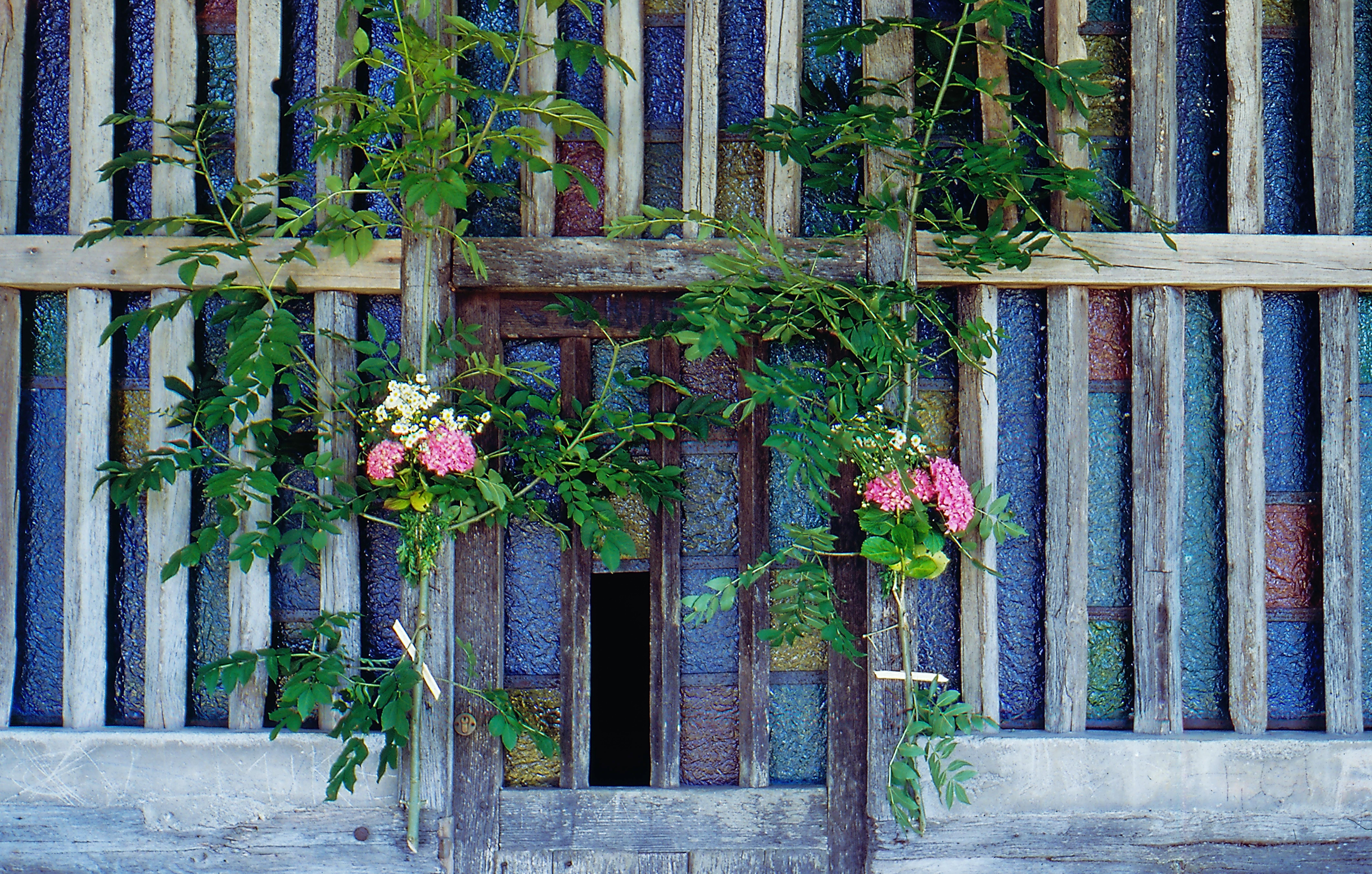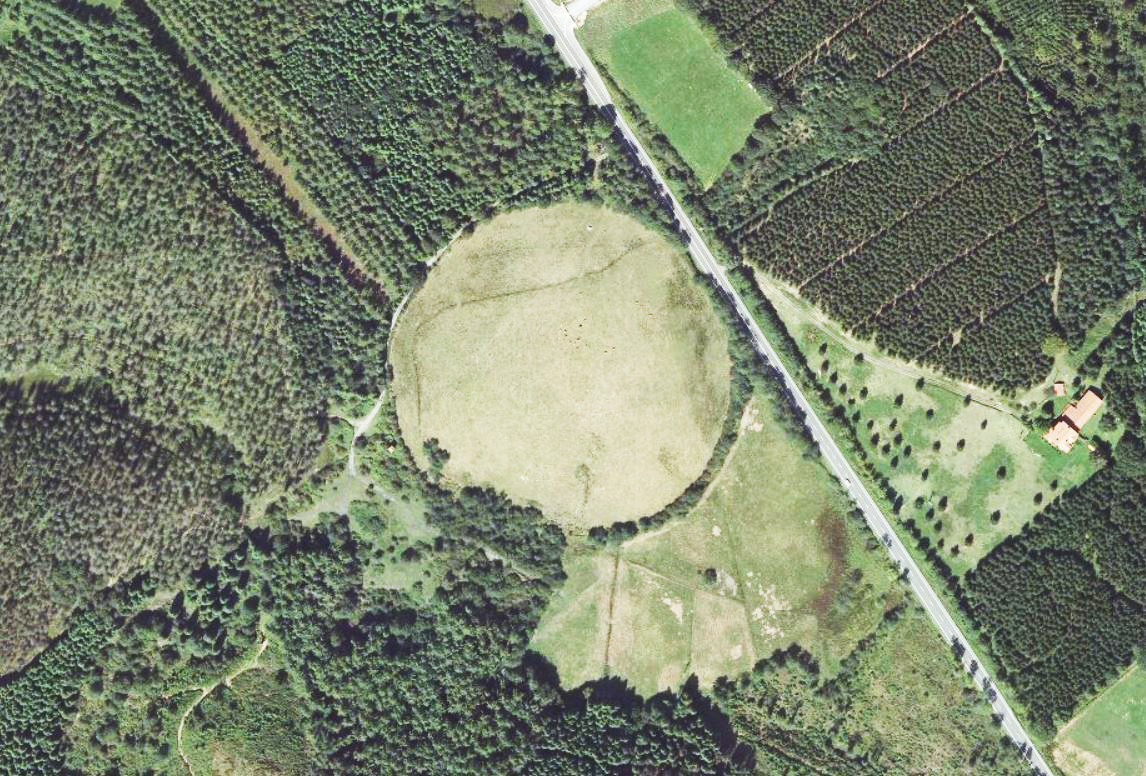Basque ethnography at a glance

Hernia repair rite on St John’s Night. Taken from: R.M Azkue. Euskalerriaren Yakintza, I. Madrid, 1947.
Many beliefs and rituals around the Feast of St John the Baptist which persist to this day are reminiscent of ancient celebrations of the summer solstice. They make up a variegated set of myths, symbols and practices regarding, along with others, fresh water springs, the morning dew, baths in the sea, flowers and herbs, bonfires and special trees. (more…)
The Spanish term sel and its Basque equivalents korta and saroi originally referred to marked off grassland where livestock in the care of a herder grazed. A pillar known as haustarria stood in the middle displaying a cross at the top. Four more boundary markers placed at the four cardinal points defined the site. (more…)

Detail of The creation of Adam, the fresco painted by Michelangelo in the Sistine Chapel.
All changes undergone by human activity could symbolically be reflected in the length of an arm.
When there were no machines, labourers were the main workforce and their arms the instrument of labour. In point of fact, an arm bent at the elbow flexing bulging biceps represents physical strength. More skill-demanding jobs that do not rely on force are mostly accomplished with the hands. Such is the case with craft and artisan work. Moving forward within the realms of intellectual pursuit, the fingers become particularly relevant. It is the fingers that hold the pen we write with or the brush that captures on a canvas an artist’s inner self. (more…)

St John’s hermitage in Murgoitio, 1995. Berriz (Bizkaia). José Ignacio García Muñoz. Labayru Fundazioa Photographic Archive.
Between dawn and sunrise on St John’s Day, it is customary to place an oak or ash branch decorated with a bunch of herbs and flowers on front doors of houses and hermitages dedicated to the saint. Ears of wheat would also be added to the arrangement in earlier times, and a peeled splinter inserted in the wood of the branch to make a rustic cross. St John’s oak bouquet (sanjuan-haretxa, in Basque) is in point of fact a traditional symbol of the summer solstice. (more…)


